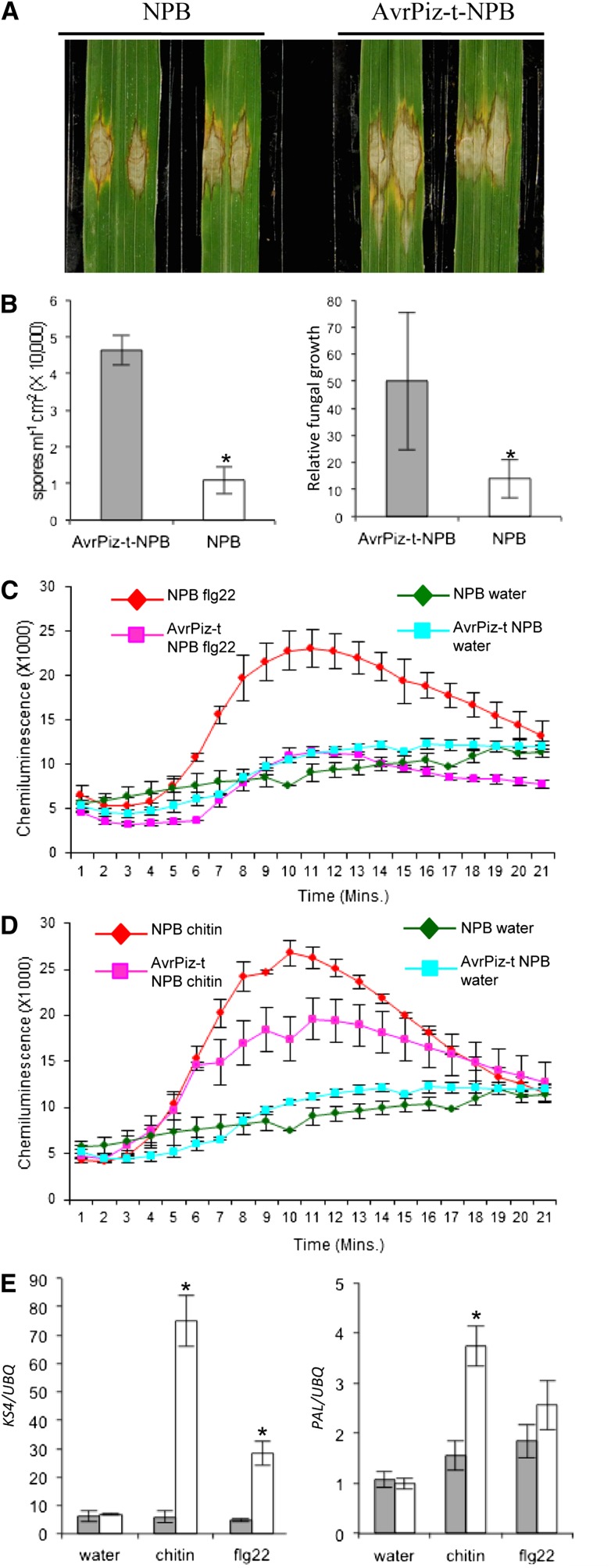Figure 2.
Response of AvrPiz-t Transgenic Rice to Blast Infection, flg22, and Chitin Treatments.
(A) Punch inoculation of the AvrPiz-t transgenic and the segregated wild-type (NPB) plants. Rice leaves of 6-week-old plants were inoculated with the virulent isolate RB22. Leaves were photographed 10 DAI.
(B) Sporulation (left) and relative fungal growth [2 [CT(OsUBQ) − CT(MoPot2)] × 10,000] (right) on the inoculated leaves. Samples were taken for the assays 10 DAI. Values are the means of three replications, and error bars represent the se (n = 8, *P value < 0.05).
(C) Flg22-induced ROS burst in the AvrPiz-t and NPB plants. Rice leaf disks were treated with 100 nM flg22 and water. ROS were detected with a luminol-chemiluminescence assay. Error bars represent the se (n = 3).
(D) Chitin-induced ROS burst in the AvrPiz-t and NPB plants. Rice leaf disks were treated with 8 nM chitin (hexa-N-acetyl-chitohexaose) and water. ROS were detected with a luminol-chemiluminescence assay. Error bars represent the se (n = 3).
(E) Induction of the defense-related genes KS4 and PAL at 1 h after incubation in water, chitin, or flg22. Gray bars indicate the AvrPiz-t transgenic plants, and white bars indicate NPB control plants. qRT-PCR was performed with gene-specific primers. Values are the means of three replications, and error bars represent the se (n = 3).

